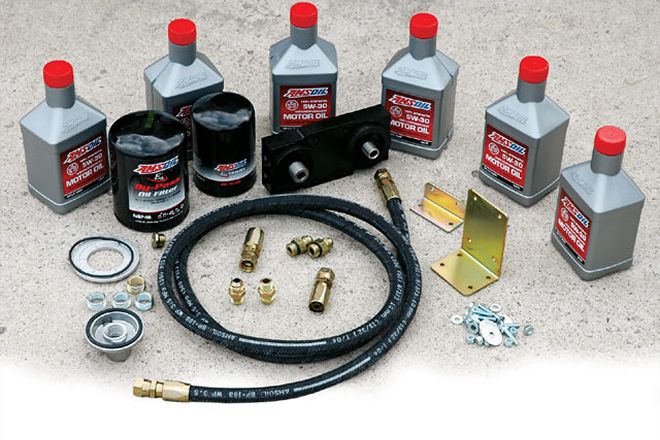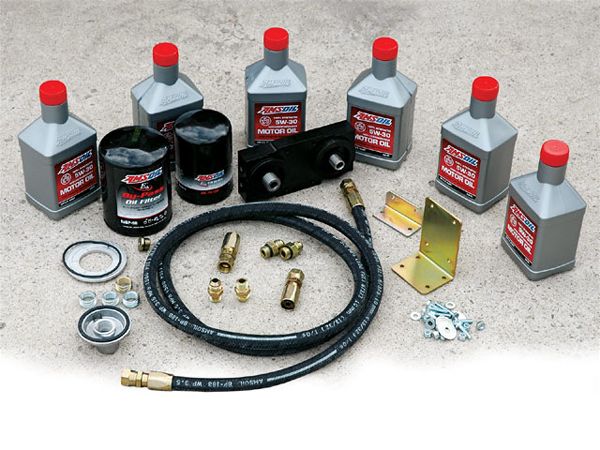
 Jerrod Jones
Former Editor, Off Road
Jerrod Jones
Former Editor, Off Road
 Amsoil's remote filter kit comes with everything you need to adapt your engine to the black gold. A black billet filter-mount assembly holds both the oil filter and a bypass filter, while 13/32-inch high-pressure hoses with NPT hose fittings send oil back and forth between the filter adapter that screws onto your engine in the original oil filter's place.
Amsoil's remote filter kit comes with everything you need to adapt your engine to the black gold. A black billet filter-mount assembly holds both the oil filter and a bypass filter, while 13/32-inch high-pressure hoses with NPT hose fittings send oil back and forth between the filter adapter that screws onto your engine in the original oil filter's place.
Standard oiling systems are fine for most vehicles, but for hard-core-use 4x4s with hi-po engines, you should really be looking at some type of remote-mount oil filtration system that adds oil capacityand longer-lasting, better filtration for your engine. Improved filtration and oil capacity improves engine life and in many cases allows for longer intervals between oil changes.
Last time we drove our Dodge (it has been some time, no jokes, please) it was blackening oil in less than 2,000 miles. It was now sitting at the Dyno Shop in Santee, California, to get some engine calibration done to make this truck run a little more smoothly. But even with the engine running right, this truck was still going to get flogged off road and something had to be done to improve the oil system. We wanted a remote mount kit with two oil filters that'd keep our engine a little happier, and Amsoil's remote filtration system was just what the Dyno Shop prescribed.





